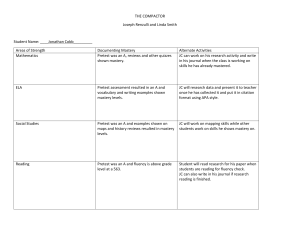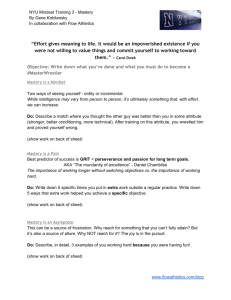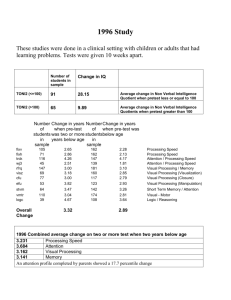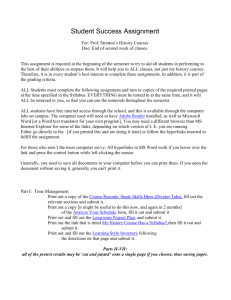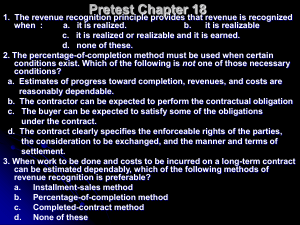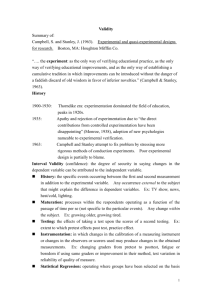Cognitive Strategy Instruction
advertisement
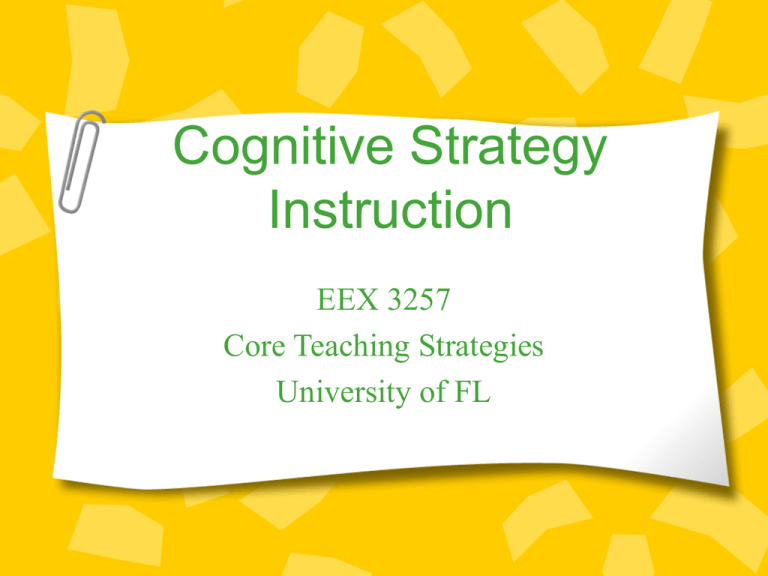
Cognitive Strategy Instruction EEX 3257 Core Teaching Strategies University of FL Strategy Instruction Rationale: For students to be successful in inclusive classrooms and in community settings, it is imperative that they are taught to use strategies that help them to successfully accomplish task demands within those environments. Strategy Instruction Strategy instruction is most meaningful when students see the connection between the strategy they are learning and the tasks they are (or will be) required to perform in general education classrooms. Strategy Instruction Students make the greatest and most lasting gains in learning and using strategies when they have opportunities to apply strategies in authentic (real world) situations. Strategy instruction teaches students HOW to solve problems and HOW to gather and use information. Where should strategy instruction take place? Considerations: If the majority of students need instruction, then the general classroom is appropriate Requires a teacher skilled in teaching strategies Sufficient practice time must be available in the class schedule Which students benefit? All students benefit, but strategy instruction is especially effective for: Students at-risk, not in special education Students with learning disabilities Students with emotional disorders Students with cognitive disabilities (mild or severe) Students with hearing impairments Definition of Strategy A set of responses organized to solve a problem (Swanson, 1993) An individual’s planful approach to a task (Putnam, Deshler, and Schumaker, 1993) 3 Concepts Associated with Strategy Instruction (1) Cognition: refers to a student’s ability to know what to do in order to complete a task (2) Metacognition: refers to a student’s ability to monitor his performance, and be flexible to change plans when the task is not being successfully completed (3) Problem solving: includes all of the following: planning, reasoning, selecting relevant information, and monitoring performance A Misconception Explained Example: Teaching students the steps in a mnemonic is not strategy instruction. However: Teaching the steps AND teaching students how to use those steps proficiently and strategically is strategy instruction. Characteristics Strategy instruction requires explicit instruction Strategy instruction is intensive (daily) and extensive (minimum of 4 weeks) It requires extensive practice and feedback Characteristics Cont. Students are provided with information on the usefulness of the strategy Mastery is required Students must acquire the ability to use the strategy independently Students are taught to self-correct Students must practice strategy on controlled material (their reading level) 1. Pretest & Commitment Select a strategy based on student need. Pretest students on a task. Get student buy-in for the new strategy. Link strategy to meaningful goals Establish logical linkage to earlier strategy and the benefits they gained. Describe different contexts (it could be used for…) 2. Describe Describe the strategy (what each step stands for). Talk about how the steps are used by people who are proficient (experts) in use of that strategy. 3. Model Demonstrate skilled use of the strategy. Use think alouds along with verbalization of the steps. Model errors, selfcorrection, and positive self talk. 4. Verbal Practice Memorize the steps (mastery is required!). Mnemonics are recommended (keep working memory capacity in mind). Graphic strategies might not require verbal practice. 5. Controlled Practice w/ feedback Students USE strategy for the first time. EASY content (at or below current level). Feedback should progress from teacher-mediated to studentmediated. Rubrics could be used for selfevaluation (which is critical here!). Meet and reteach small groups of unsuccessful students. 6. Advanced Practice w/ feedback Students progress to more advanced materials. Feedback continues to move toward more student-mediated. Student performance may decline at first because of more complex content. Mastery of strategy use is required at this stage. 7. Posttest Use an instrument similar to pretest to allow students to see progress. Show students results (powerful motivator). 8. Generalization GOALS: Use of strategy in other settings. Students know when, where, and how to use strategy and they USE it! Promote strategy use in novel situations - extend beyond your classroom. Students’ Strategic Behaviors Goal setting: leads to the development of strategies to achieve goals – Knowing oneself (capabilities and preferences) – Making choices (decision making) – Identifying desired outcomes (product or performance goals) – Planning to accomplish goals (process)
